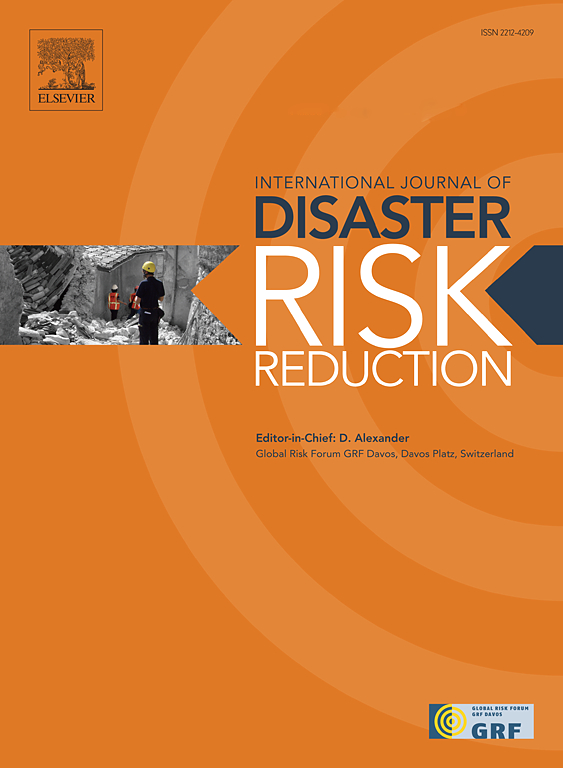Community resilience to flooding in the UK: A study of Matlock, Derbyshire
IF 4.2
1区 地球科学
Q1 GEOSCIENCES, MULTIDISCIPLINARY
International journal of disaster risk reduction
Pub Date : 2025-01-31
DOI:10.1016/j.ijdrr.2025.105266
引用次数: 0
Abstract
The United Kingdom has faced recurring floods since 2019, with 5.2 million homes at risk. This has prompted the UK government to prioritise resilience planning in flood prone areas. This study focuses on community resilience in Matlock, Derbyshire, which has experienced intensified flooding since 2018. Using qualitative interviews and a focus group, the research examines evidence of community resilience and the barriers to its development by focusing on community activities during flooding incidents, if and how these were collective efforts and relationships, and what are the perceived challenges to community resilience building. Our findings revealed that residents of Matlock used local action groups and social media, community led warning systems and promotion and engagement in civic participation to foster and enhance community resilience. While bonding and bridging capital were critical to support community resilience building, there were significant barriers to linking social capital, such as the disconnect between community members and formal institutions (i.e. government organisations) that left participants disheartened and frustrated. In conclusion, the study argues that further fostering of linking social capital through policy recommendations and developments such as regular community, small grants for community initiatives and integrating local knowledge into policy frameworks will bridge the gap between communities and these external stakeholders. In doing so, activities that aim to enhance Matlock's flood resilience may inform broader strategies for place-based and devolved policies addressing environmental challenges in a wider context.
求助全文
约1分钟内获得全文
求助全文
来源期刊

International journal of disaster risk reduction
GEOSCIENCES, MULTIDISCIPLINARYMETEOROLOGY-METEOROLOGY & ATMOSPHERIC SCIENCES
CiteScore
8.70
自引率
18.00%
发文量
688
审稿时长
79 days
期刊介绍:
The International Journal of Disaster Risk Reduction (IJDRR) is the journal for researchers, policymakers and practitioners across diverse disciplines: earth sciences and their implications; environmental sciences; engineering; urban studies; geography; and the social sciences. IJDRR publishes fundamental and applied research, critical reviews, policy papers and case studies with a particular focus on multi-disciplinary research that aims to reduce the impact of natural, technological, social and intentional disasters. IJDRR stimulates exchange of ideas and knowledge transfer on disaster research, mitigation, adaptation, prevention and risk reduction at all geographical scales: local, national and international.
Key topics:-
-multifaceted disaster and cascading disasters
-the development of disaster risk reduction strategies and techniques
-discussion and development of effective warning and educational systems for risk management at all levels
-disasters associated with climate change
-vulnerability analysis and vulnerability trends
-emerging risks
-resilience against disasters.
The journal particularly encourages papers that approach risk from a multi-disciplinary perspective.
 求助内容:
求助内容: 应助结果提醒方式:
应助结果提醒方式:


